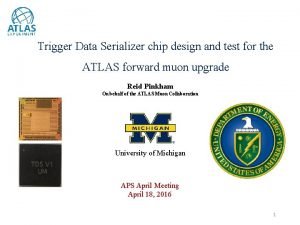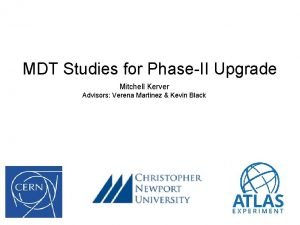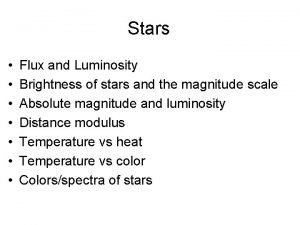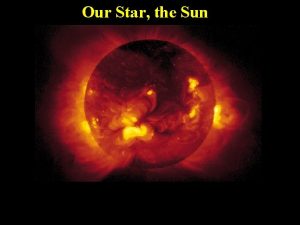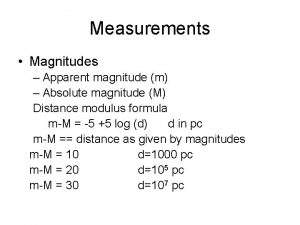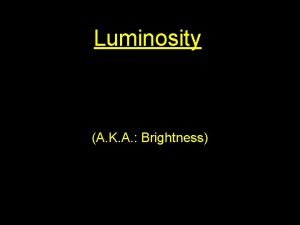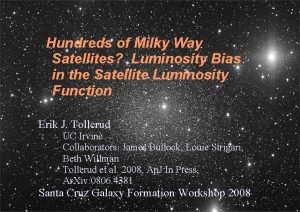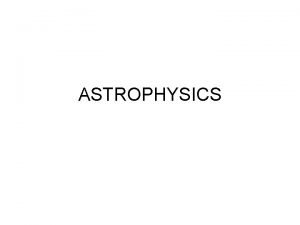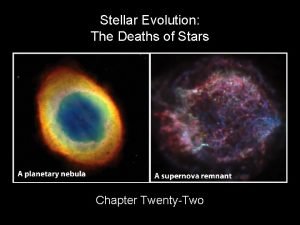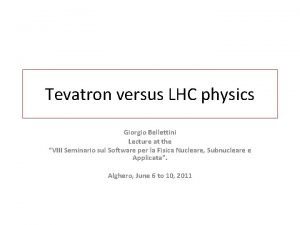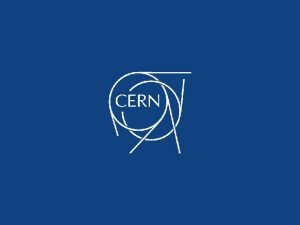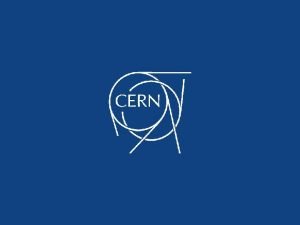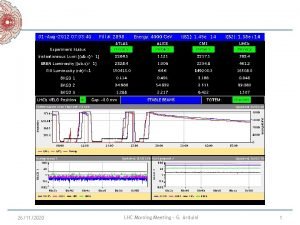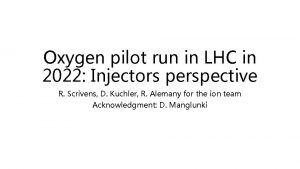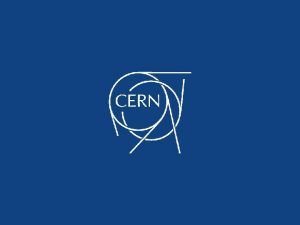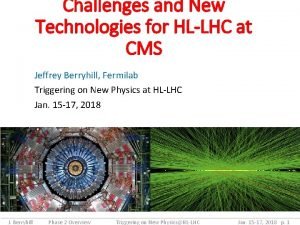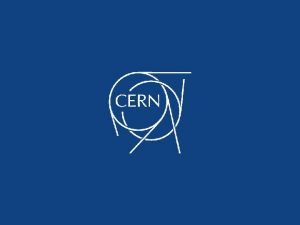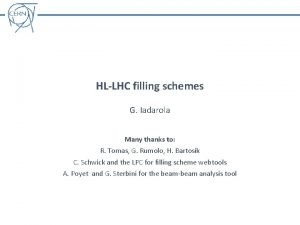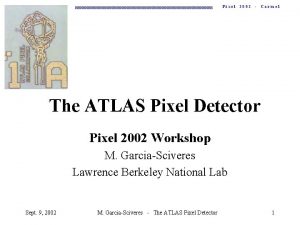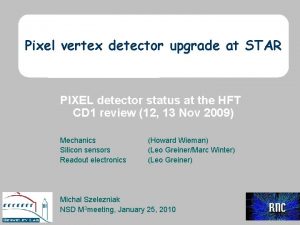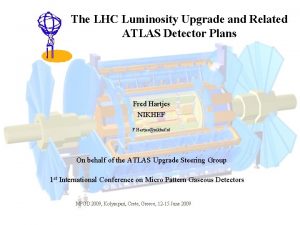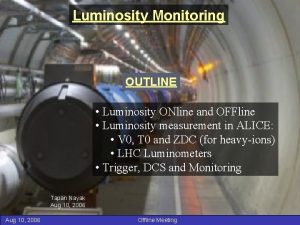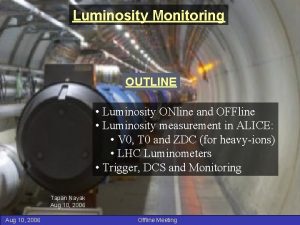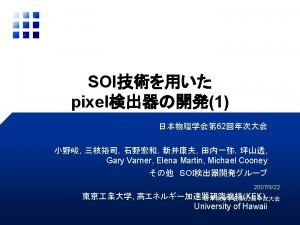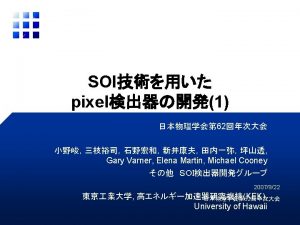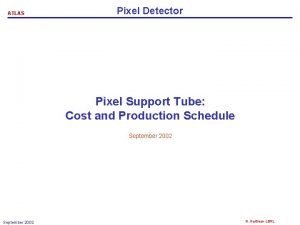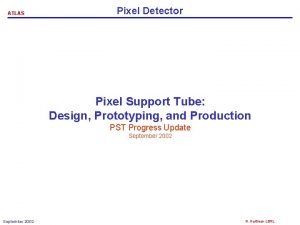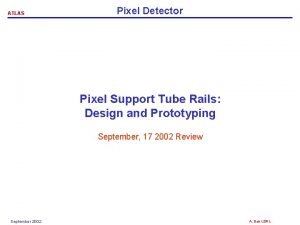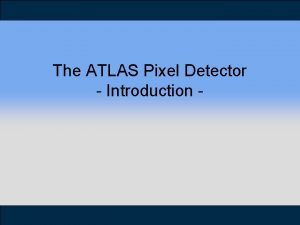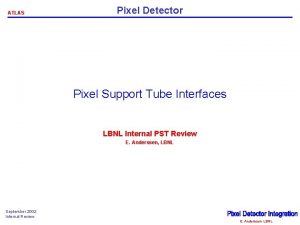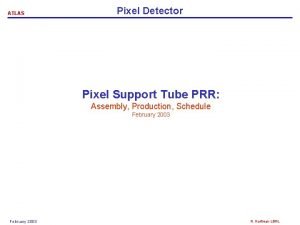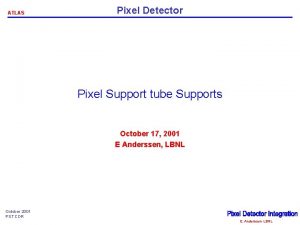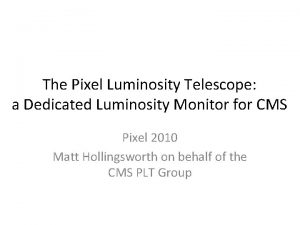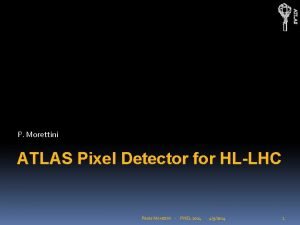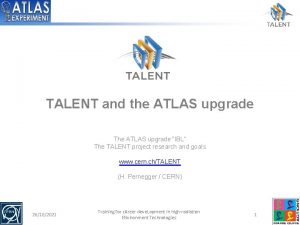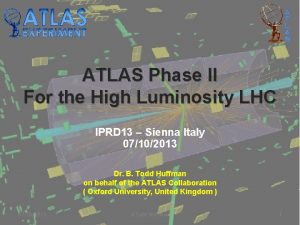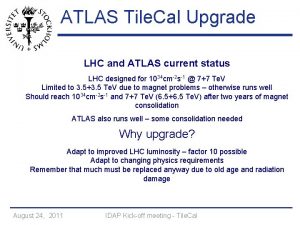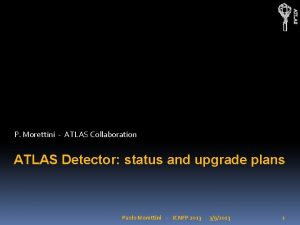ATLAS PIXEL DETECTOR UPGRADE for HIGH LUMINOSITY LHC





























- Slides: 29

ATLAS PIXEL DETECTOR UPGRADE for HIGH LUMINOSITY LHC Institute of Physics Conference 7 -9 April, 2014 Royal Holloway University of London Kate Doonan In collaboration with University of Edinburgh, University of Glasgow, University of Liverpool, University of Manchester & Rutherford Appleton Laboratory

Outline • • Reasons for Pixel Upgrade The FE-I 4 Sensors Tuning in Laboratory Bump-Yield Studies Test Beam Activity Reconstruction of Test Beam Data Kate Doonan *Peter Vankov 2

Introduction • Why is an upgrade to the Pixel Detector necessary? – Higher multiplicity harsh radiation environment radiation tolerance from detectors – High instantaneous luminosity increased pile-up higher bandwidth – High occupancy higher granularity in z resolve individual vertices and provide pattern recognition • What does a pixel upgrade entail? – Development of new Front-End chips and sensor technology to deal with pile-up and increased radiation fluences • What is being done to make the upgrade a success? – Characterisation in Lab and Test Beams Kate Doonan 3

The Front-End I 4 – FE-I 4 • New Front-End read out chip developed for Insertible b-Layer (IBL): FE-I 4 • Correct pixel size for outer barrel layers and forward disks • Made to fit largest reticle in 130 nm IBM CMOS process • Starting point for Front-End to be used for HL-LHC Upgrade Pixel Size – 40 MHz readout, large area, high active fraction, Pixel Array radiation tolerant to 5 x 1015 n. eq. for IBL, high Chip Size granularity Active Fraction – single Chip assemblies and Quad modules with possibility to include multiplexing for 4 -chip readout Kate Doonan 250μm x 50μm 80 columns x 336 rows 20. 2 mm x 19 mm 89% 4

Single Chip Sensors CERN Pixel V Variety of sensor geometries 125μm x 100μm 167μm x 125μm 250μm x 50μm 500μm x 25μm 2000μm x 50μm Kate Doonan Pixel Endcap capabilities Outer Barrel Layers Potential for use in 5 th Pixel Layer 5

Quad Sensors • Long pixels (250 500μm) are used to keep sensor • Ganged pixels (multiple pixels per channel) used to area active from chipconnect chip-bottom to side to chip-side Kate Doonan 6 chip-bottom

Making A Module • Sensor attached to Front-End chip (or read-out chip, ROC) via bump-bonding • One example of the bump-bonding process at VTT, Helsinki using Sn. Pb (solder) bumps: – Deposit under-bump metallisation (UBM) and bumps – Flip-chip bond to sensor – Re-flow bumps at 260ºC Kate Doonan 7

Characterising a Front-End Assembly pulse amplitude Threshold tuning To. T Tuning Bump-Yield studies Source Scans hit detection probability [%] • • 100 Sigma 50 Threshold 0 signal charge Time over Threshold time Kate Doonan 8

Characterising a Front-End Assembly • What do we require from assemblies? – Uniform Threshold and Time-over-Threshold (To. T) values – Low noise at operation threshold • 3000 e, (1500 e after irradiation) threshold, 9 To. T @ 16 ke for IBL – All pixels must be capable of readout • Bump-bonding must be of high quality (99. 8%) – Still in working order post-irradiation to fluences expected – Efficiency high over all sensor – Require minimum dead area – • • use ganged and long pixels over quad sensors investigation of slim edges Kate Doonan 9

Characterising a Front-End Assembly • Characterisation in the lab requires a read-out system and control software USBPix – USBPix & STControl (Bonn) – RCE system & Calib. Gui (SLAC) • To explore efficiency and resolution, we need high-energy particles and a telescope RCE system – Test Beams at DESY (Hamburg), SPS (CERN) and SLAC (California) with EUDET Telescope Kate Doonan 10

Characterisation in Laboratory • Threshold tuning – Tune by changing local pixel threshold voltage, TDAC, over whole pixel matrix until threshold is uniform – Check uniformity: inject each pixel with incremented amount of charge until charge is high enough to register as being a signal – i. e. being over threshold – Tuned threshold dispersion must be <100 e (IBL TDR) Kate Doonan 11

Characterisation in Laboratory • To. T Tuning – 80 e-h pairs per μm of Si created by a MIP – i. e. a MIP passing through 250μm of Si creates 20 k e-h pairs – Tune time 20 ke spends over threshold to be 9 by altering FDAC value pixel-by-pixel until matrix To. T is uniform – 20 ke spends 9 x 25 ns bunch crossings above threshold Kate Doonan 12

Characterisation in Laboratory • Bump-Yield studies – Assessing quality of different vendors for ATLAS Phase-II Upgrade has lead to interesting studies in bump-bond yields – Eventually want thin modules: 150μm chip and 150μm sensor – Bowing effect due to CTE mismatch in the CMOS stack in the FE-I 4 – Problem can be rectified by providing back-side compensation to the wafer to prevent lifting and breaking of bump-bonds during re-flow Kate Doonan How to assess bump-yield: • Perform Threshold Scan at 0 V • Look at sigma on threshold • Large sigma ~400 e due to bulk of silicon as it is undepleted • Sigma ~120 e is due to noise inherent in FE electronics i. e. these pixels are unbonded • Perform Crosstalk Scan at high voltage • Look at occupancy • If pixel exhibits crosstalk under bias, it is merged 13

Characterisation in Laboratory • Thinned VTT module with poor bump yield. • 16150 disconnected pixels due to bowing at high temperature during re-flow • Bump-yield: 39. 9% Kate Doonan 14

Characterisation in Laboratory • Advacam bump-bonded module shows vastly improved results • 2 disconnected pixels gives bump-yield of 99. 99% *Marko Milovanovic Kate Doonan 15

Characterisation in Laboratory • Bump yield study on Indiumbumped module by John Lipp at RAL (full thickness but work on thinned modules starting) – Bonding performed at 30ºC • Disconnected pixels: 6/26880 – (criteria: Sigma > 0 e and < 200 e) • Merged bumps: 106/26880 – (criteria: Crosstalk occurs at 100 V) • Total Bump-Yield: 26768/26880 IBL TDR accepted bump-yield 99. 8% 99. 6% (57 disconnected pixels) 16 Kate Doonan

Characterisation in Laboratory ROC 1 • Source Scan on Quad Module – Use Americium-241 and self-trigger mode in RCE – Decays by α-emission with a byproduct of γ-rays – Plots show 3 chips of quad with Am 241 source row ROC 1 col ROC 3 ROC 2 col ROC 2 Source row Kate Doonan row col 17

Characterisation at Test Beams Eudet Telescope e- • 3 Mimosa planes in each telescope arm • Overlapped scintillators (2 cm x 1 cm) act as trigger • Devices under test (DUTs) placed between arms • 4 Ge. V electrons • Read out data with RCE system or USBPix Kate Doonan 18

Reconstruction of Test Beam data RECONSTRUCTION • Converter • Clustering • Hitmaker • Align • Fitter Quad Module ATLAS Work in Progress Scintillator ATLAS Work in Progress – Outputs TBTracks ANALYSIS • Efficiency • Resolution – Multiple scattering studies Kate Doonan Reference sensor 19

Reconstruction of Test Beam data • Cluster size in Y • Cluster size in X – More cluster size 2 & 3 as expected due to smaller pixel pitch (50μm) – More cluster size 1 as expected due to larger pixel pitch (250μm) ATLAS Work in Progress Kate Doonan 20

Conclusions • Detailed work underway for HL-LHC Upgrade of ATLAS Pixel Detector – Use of FE-I 4 as read-out chip – Development of sensor technology • Characterisation of both Front-End chips and Sensors – Tuning and exploration of FE-I 4 characteristics – Bump Yield studies – Test Beams Thank you for your attention! Kate Doonan 21

BACKUP Kate Doonan 22

CERN Pixel V – Sensor Geometries ROIC Pixel Matrix 250μm x 50μm Kate Doonan 23

CERN Pixel V – Sensor Geometries ROIC Pixel Matrix 250μm x 50μm 500μm x 25μm Kate Doonan 24

CERN Pixel V – Sensor Geometries ROIC Pixel Matrix 250μm x 50μm 125μm x 100μm Kate Doonan 25

CERN Pixel V – Sensor Geometries ROIC Pixel Matrix 250μm x 50μm 2000μm x 25μm Kate Doonan 26

Characterisation in Laboratory FDAC structure • Structure in FDAC maps was discovered during tuning To. T of modules and bare ROC using USBPix and RCE system • Not seen in TDAC map so is not physical damage to module • Improvement when using IBL tuning parameters but structure still evident • Scope for exploring parameter space of scans in both USBPix and RCE – May be a powering issue – Investigation on-going Kate Doonan 27

Characterisation in Laboratory FDAC structure SC 3072 -4 -8 250μm x 50μm Original tuning Using IBL tuning scheme Kate Doonan 28

Characterisation in Laboratory FDAC structure SC 3072 -4 -8 250μm x 50μm Mean: 8 RMS: 0. 22 FDAC map corresponds to well-tuned To. T Kate Doonan Using IBL tuning scheme 29
 Txp100
Txp100 Atlas detector
Atlas detector Mizar luminosity
Mizar luminosity Luminosity and magnitude
Luminosity and magnitude Sun surface temperature
Sun surface temperature Redshift formula
Redshift formula Luminosity class definition
Luminosity class definition Brightness vs luminosity
Brightness vs luminosity Luminosity distance
Luminosity distance Luminosity distance
Luminosity distance Luminosity
Luminosity Luminosity vs temperature
Luminosity vs temperature Luminosity
Luminosity Luminosity lpi
Luminosity lpi Bellettini
Bellettini Www.lhc.la.gov
Www.lhc.la.gov Hl-lhc schedule
Hl-lhc schedule Uk hep forum
Uk hep forum Lhc logbook
Lhc logbook Lhc morning meeting
Lhc morning meeting Worldwide lhc computing grid
Worldwide lhc computing grid Lhc budget
Lhc budget Lhc schedule 2022
Lhc schedule 2022 Lhc performance workshop
Lhc performance workshop Lhc performance workshop
Lhc performance workshop Hl intranet
Hl intranet Hl-lhc schedule
Hl-lhc schedule Lhc performance workshop
Lhc performance workshop Lhc filling scheme
Lhc filling scheme Gant chart
Gant chart
